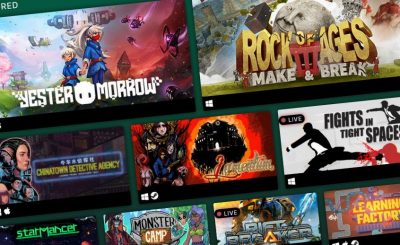One of the hardest parts of indie marketing is getting your game into the hands of the right people. You might know who those people are: games journalists. But, getting in touch with them is no easy task and even when you do, getting a response might be even harder. Journalists are very busy and their inboxes are filling up every day with a never-ending tide of PR emails from indie devs asking them to look at their game. It’s hard to know how to stand out in that crowd. PR agencies take great care in building the kind of reputation that gets their emails at least opened by journalists, but even that doesn’t guarantee coverage.
To help you understand why journalists are ignoring your emails, we spoke to a couple of editors at Game If You Are’s partner site, The Indie Game Website. As an indie-specific outlet, they receive dozens of indie game PR emails a day and have specialist insight that might just give you the best chance of making your emails stand out.
First impressions count
A journalist might have mere seconds to glance at your email in their inbox as they scan through their new messages. The first thing they are going to see is who the email is addressed to and the subject line. Think about those two things carefully, as deputy editor at The Indie Game Website, James Sheppard points outs when asked what’s the first thing he looks for when scanning PR emails.
“The first few words in the subject line,” says James. “In terms of being relevant and attention-grabbing. Being short helps, as I often check emails on my phone and subject lines get truncated. Ironically, ALL CAPS subject lines just turn me off personally and make the above issue worse.”
News editor Brittany Vincent would agree, adding that it’s also useful to add the “purpose of the email in brackets, such as [REVIEW CODE] or [NEWS] or [TRAILER].”
Don’t forget the ‘To’ part as well, as an email that says ‘To Contact’ or ‘To [Insert Website]’ isn’t going to be as appealing as ‘To James’ or ‘To Brittany’ for instance. But we’ll cover that in more detail in the next section.
Make things personal
The fact that journalists are human beings and not automated typing bots is often forgotten by the developers cluttering up their inboxes with demands for coverage. The best way to approach someone you want to cover your game is not by spanning them with impersonal requests. Learn their name, their likes and what sort of content they prefer to cover.
With that, you can create an email aimed at them personally demonstrating that you’ve taken the time out to see if the game would be a good fit for their audience and what they usually like to cover. Don’t mindlessly mass email – there’s nothing more impersonal than copying 40+ people into the same email and giving everyone the same blanket approach. This also goes for just tagging a bunch of sites or journalists on Twitter. Don’t use a carpet bomb approach with your PR; make it targeted and precise.
And as Brittany says: “Learn who you’re targeting and don’t send indie pitches to triple-A writers.”
Timing is important
Emailing journalists the day your game comes out asking if they’d like to review it is almost certain to not succeed. As hard as it is for indie games to find coverage, starting your outreach early gives you the best possible chance of success.
“Think ahead about PR campaigns,” says Sheppard. “Don’t email a couple of weeks after release day saying, ‘We made a game, please cover it as we didn’t have the foresight to reach out beforehand’ – even on release day is way too late for an initial contact.”
That goes for launch day news coverage as well. Touch base with journalists beforehand to see if it’s something they’d be interested in covering so you can create a shortlist.
Get to the point
With the limited time a journalist will spend reading your email you need to get to the point, and fast. As James says, anything that is “too long, irrelevant, minor trivial news or info not worth doing anything with, or generic marketing prose,” will not get a second glance. You need to be succinct and personable supplying all the relevant materials in an accessible way.
You want all the information the journalist could ever need on your game in that one email. Most journalists will not have the time or patience for multiple follow-ups to get what they need. As Brittany says, “don’t make me chase you down or ask for assets. I also dislike using assets provided that are too small or too huge. Make it extremely simple for me to use what you’ve sent.”
If you are looking for some more detailed information on what to add then check out this previous post we did on the subject.
Give yourself the best opportunity for success
PR agencies spend years building up their reputations within the media to facilitate that two-way relationship between practitioners and outlets that write about their given specialisation. Don’t expect success right away but avoid non-targeted pitches, jargon, hard-sell marketing and spelling mistakes and you’ll give yourself the best chance to succeed.
Remember to include all the information a journalist will need as succinctly as you can along with some high-quality assets all delivered in a timely fashion before the game releases, and you might just get the coverage you are looking for.


